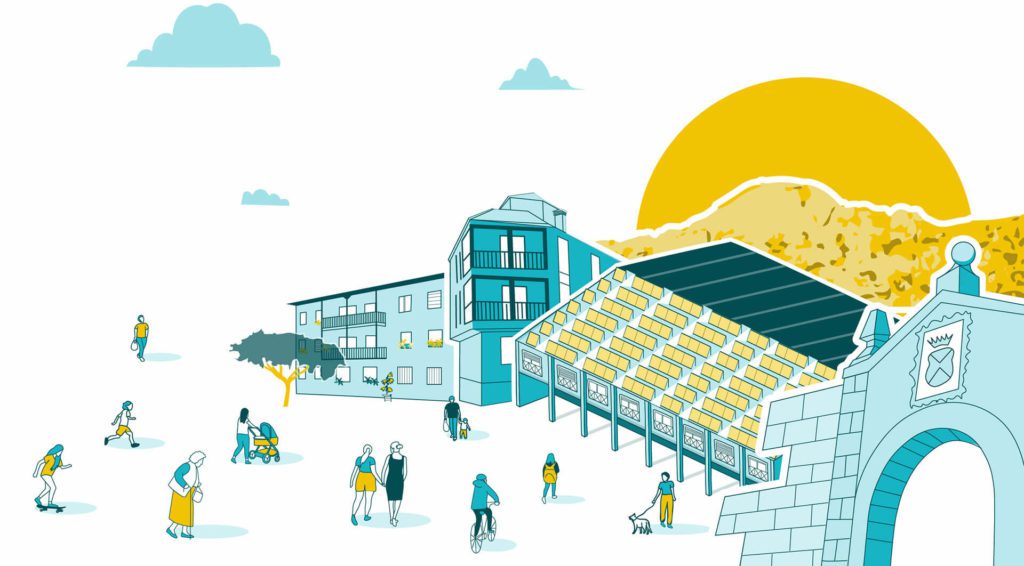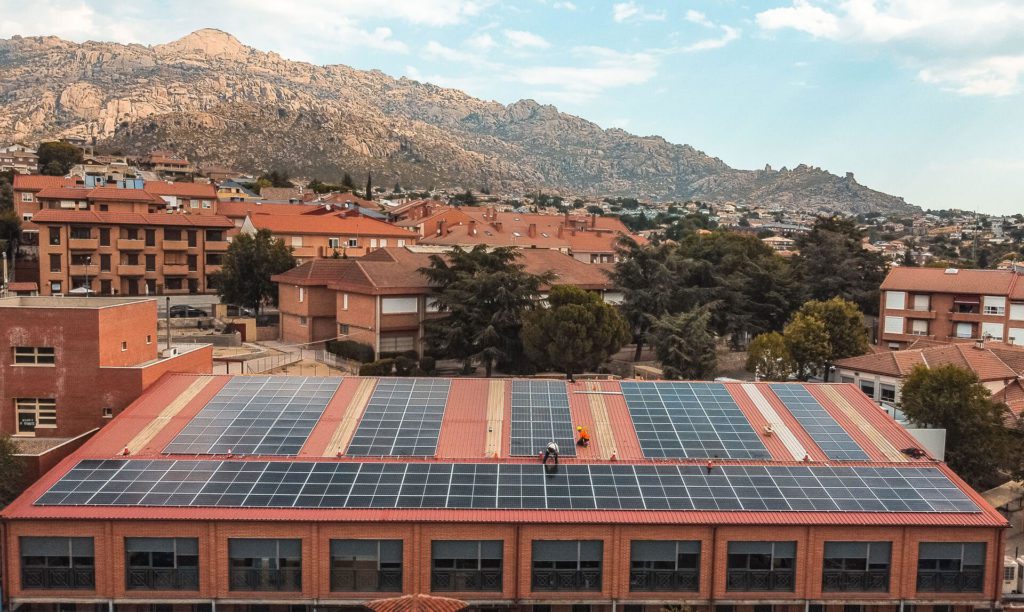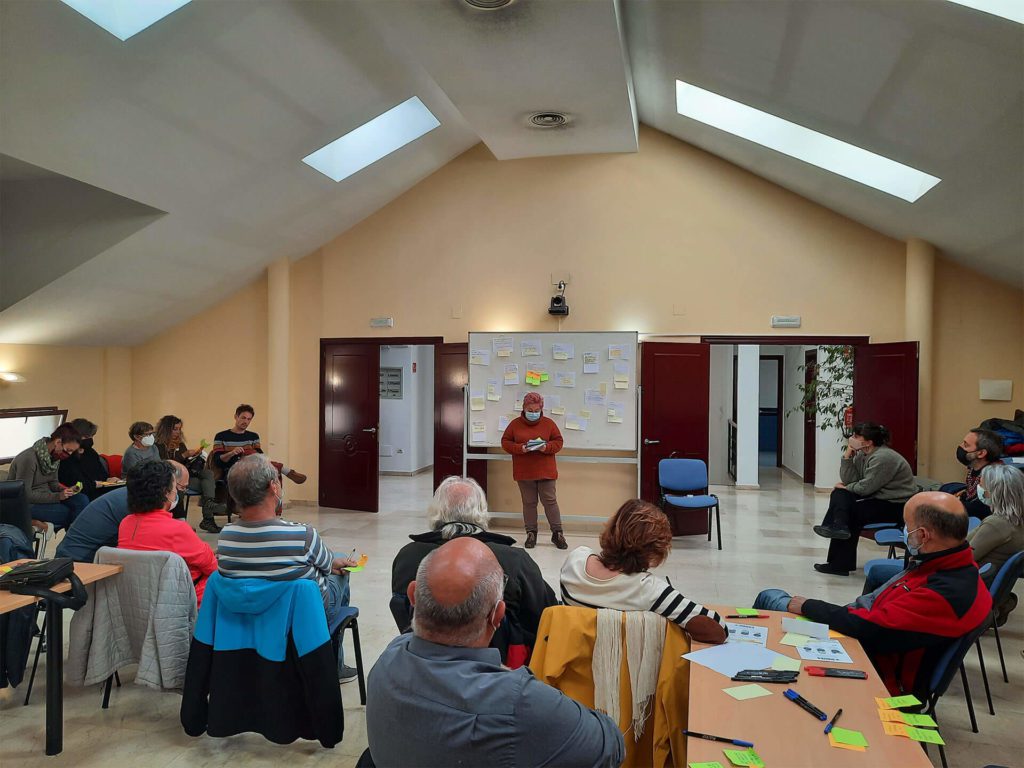Fair Energy for All
Energy communities can re-power the EU by empowering citizens.
Energy transitions have gained momentum in the face of the climate, energy, and economic crises that are challenging Europe. As a response to Russia’s invasion of Ukraine and its disruptive effects on the energy market, the EU’s REPowerEU plan is calling to accelerate the transition to clean energy and to increase its energy target to 40% renewable energy sources by 2030. The energy crisis is an example of a situation where people and households are bearing the consequences, such as soaring prices and energy shortages, without having opportunities to engage in decisions on the energy system. Achieving a sustainable and just energy transition would require giving the public more say over their energy options.
What is energy citizenship?
The EC² project – focusing on creating an energy transition through energy communities – defines it as “people’s rights to, and responsibilities for, a just and sustainable energy transition”. In this vein, people should not be perceived merely as passive consumers.
The concept of energy citizenship is not new; there are elements in existing EU policies, including the EU Clean Energy Package adopted in 2019, approaching people’s active participation in the energy market as a right (not bound to nationality) beyond consumer roles. This legislation also included the concepts of enabling directives for renewable energy communities and citizen energy communities.
All energy citizenship approaches should focus on the public’s right to clean and affordable energy, and their willingness to act. However, people should not be expected to act and make decisions alone; policy-makers and governments are responsible for creating policies, funding, and initiatives to support people to be conscious energy citizens. Unfortunately, more often than not energy citizens are men equipped with ample funds, time, and technological knowledge. Targeted measures are needed to support the participation of groups that are in vulnerable situations or otherwise excluded in the current energy transition, including low-income and energy-poor households, youth, and women.

Developments in energy citizenship are focusing on strengthening citizen participation both in policy and practice. Active forms of energy citizenship might include becoming a prosumer (those who both produce and consume energy) or a member of an energy community (citizen-led, collective and non-profit entities for energy systems). Such actions are increasingly popular across Europe.
Local public institutions are essential to facilitate processes based on principles of equity and social justice.
Work is still needed to harness the full potential of decentralized and democratic energy systems; over 80% of the households in the EU could participate in some form of renewable energy production and consumption. Energy communities have great potential to mainstream civic engagement in energy transitions and work towards all facets of energy citizenship – including tackling energy poverty, increasing agency in decision-making, and strengthening a sense of belonging. There is also a need to support varied citizen engagement, beyond technological innovations. Citizens can also engage financially, politically, materially, or non-materially. The real experiences of energy community pilots, such as those from the EU-funded Lightness project, help to illustrate why technical innovations need to be merged with participatory processes, governance measures, and sociocultural considerations.
Local governments as leaders and facilitators
The EU and national governments can be considered the guardians of people’s right to energy citizenship by providing policy frameworks, for example for energy communities (RED II & IEMD), while local governments are the facilitator and enablers of these rights. The latter has an important role in implementing energy policies, including supporting, setting up, and participating in energy communities. They can facilitate access to knowledge and funds for energy communities for “normal” citizens. Being the direct point of contact for most citizens, local governments can enable greater participation and inclusion in energy transition measures, using their resources, knowledge of, and relationship with, the local community. They can help define which particular groups require greater support. One example is the municipality of Manzanares el Real in Madrid, Spain, which is a key agent in the energy community piloted in the city. The local government is installing a photovoltaic generation plant of 100 kWp (kilowatt peak) and 50 kWh lithium-ion battery storage system in a municipal sports center, supporting not only the building itself but a public school, 15 energy-poor households, and other interested households.

Local public institutions are essential to facilitate processes based on principles of equity and social justice. In Manzanares, the local administration has positioned the community at the heart of its efforts, with the intention of improving social cohesion and reducing energy poverty. The municipality has made an initial economic investment and is engaging citizens with playful and intergenerationally targeted campaigns, with the goal of addressing social challenges specific to the city.
Once an active energy community is formed, the municipality can take a step back and let the citizens take the lead, however, there are concerns about whether enough citizens will take up ownership and responsibility. Another potential challenge to be addressed is whether the municipality will be consistent in the project amidst political changes over time. Participation of energy-poor households in communities can also be time difficult – given their lack of time, interest, or capabilities.
The differences between those in a vulnerable situation and the “upper class” who can invest in solutions and have a higher energy literacy, can easily overwhelm those that have fewer resources, leading them to perceive they cannot contribute to the community. The Manzanares municipality has tackled this well by focusing less on technical aspects of energy generation and regulation, and instead on the needs of participants. This has allowed the community to find suitable levels of engagement for varied participants and choose suitable actions for this specific setting, whether it is electric mobility, generating and selling energy, or other local climate mitigation initiatives.

How does the municipality do this in practice? They organize co-creation workshops and events where citizens and local authorities develop objectives, activities, and governance structure of the energy community together. In parallel, one-to-one meetings have proven a useful approach to addressing daily energy habits. Visits to the households of the energy community participants help assess potential energy savings, refurbishment options that can be subsidized, and the link between individual and community energy savings. Also, public institutions can be part of energy communities – the Virgen de Peña Sacra school has been engaging citizens across generations in energy efficiency.
Teachers are incorporating energy-related information in subjects, and the school spaces utilizing these measures are a great showcase. As an incentive, the municipality will invest the savings made due to energy efficiency in what the students agree upon. Through youth learning, they are encouraged to bring the lessons home as well.

From a technocratic approach to a human one
Acknowledging social and cultural aspects is key to ensuring that citizens participate in energy transitions. In an energy community pilot in the housing cooperative of an apartment block in Spółdzielnia-Południe in Wroclaw, Poland, sociocultural challenges are undermining the possibilities of technological innovations.
A pilot project installed photovoltaic panels on roofs covering the energy usage of common areas and the community is working on expanding the locally produced energy to all households. Technological developments are progressing smoothly with the installation of smart measures for real-time consumption data, including an app for participants to track their daily energy usage.
Getting people on board is more challenging, as the population is elderly and many have mobility difficulties and health problems. To address this an individual door-to-door engagement approach was successful in reaching more residents. New daily practices and integrating energy considerations into the public psyche will be fundamental for boosting the power of citizens in the energy system. The pilot found that gathering an active group of citizens that can act as ambassadors to further the cause among others, is a good approach toward creating a truly sustainable energy community.

Energy communities are effective platforms to tackle the energy crisis and climate change. Nevertheless, to promote energy citizenship for everyone, engagement processes and co-creation between local stakeholders need to be rooted in the needs and capacities of participants.